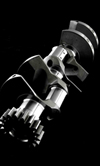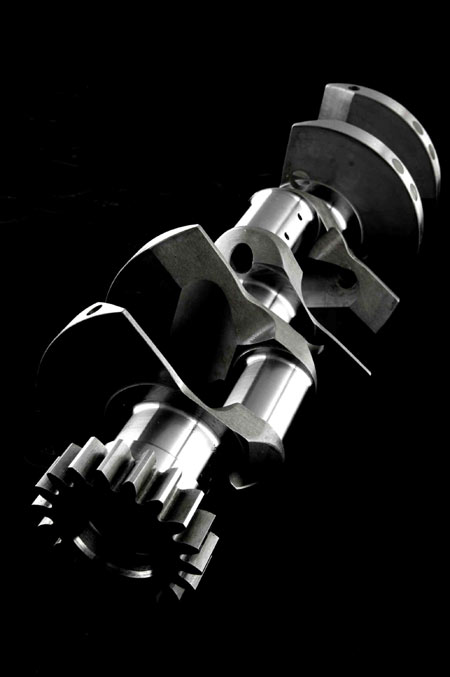Nitriding
 There are a great number of components in the race engine that need a hard, wear-resistant surface. Crankshafts, camshafts, cam followers, gears, sprockets, spindles and pump shafts are some example of components that are regularly treated in some way to increase the hardness of the surface. In some cases, there is a requirement that the part has a high level of strength throughout, and such components which are through-hardened. Camshafts, and cam followers are commonly produced in both surface-hardened and through-hardened types.
There are a great number of components in the race engine that need a hard, wear-resistant surface. Crankshafts, camshafts, cam followers, gears, sprockets, spindles and pump shafts are some example of components that are regularly treated in some way to increase the hardness of the surface. In some cases, there is a requirement that the part has a high level of strength throughout, and such components which are through-hardened. Camshafts, and cam followers are commonly produced in both surface-hardened and through-hardened types.
Nitriding is a type of surface hardening that is beloved of many engineers, in the racing world and outside. It is a popular form of surface treatment, not only for its ability to create a hard and wear-resistant surface, but also finds use on components that have no requirement at all for a hard surface. This is due to residual compressive stresses. Any component that is subjected to a cyclic stress which is not purely axial in nature (and few things come into this category of pure axial loading) is likely to benefit from having its surface treated such that compressive residual stresses exist at the surface. Nitriding is one way of achieving this aim on steel components, although not all steels are suitable for nitride hardening.
The nitriding process works best on materials that have additions of nitride-forming elements, most commonly chromium but also aluminium and, less commonly, molybdenum and titanium. There are a number of engineering steels that are suited to nitriding, and others that are specially manufactured with nitriding in mind. Chromium is a strong nitride former, but in steels with large percentages of chromium, special surface pre-treatments are sometimes required to remove a very thin oxide layer that disrupts the efficient diffusion of nitrogen into the surface during the nitriding process.
The process generally takes place in the region of 450-600 C (about 840-1110 F), depending on the type of process. The aim of the nitriding process is to cause nitrogen to diffuse into the outer surface of the material, and this is quite a slow process, with 'case depths' of 1 mm (0.040 in) requiring very lengthy processes that are expensive as a consequence. The process temperatures make it unsuited to steels whose final tempering temperature is lower or equal to the nitriding temperature, as the material core hardness will fall.
The levels of compressive stress that can be achieved with nitriding processes can be large, running into several hundred MPa (well over 100 ksi) at or close to the surface of the nitrided part. Some processes have been optimised to produce the greatest compressive stress, such is the potency of nitriding in combating fatigue failures.

For highly stressed parts with large stress concentrations, nitriding can be one way to achieve a good compromise between low component mass and adequate component life. The most common use in race engines is for crankshafts, where the fortunate combination of wear resistance and improvement of fatigue life are highly valued. It is important to ensure that the nitriding is present at the regions of greatest stress concentration; where crankshafts are ground after nitriding, care needs to be taken that the pre-nitriding surfaces of fillet radii and oil holes are an offset of the final surfaces after grinding, lapping and polishing. Removal of the nitride layer will lead to reduced component life, as has been confirmed many times by race engine manufacturers.
Fig. 1 - Crankshafts take advantage of the wear resistance and residual tensile stress that nitriding offers (Courtesy of Arrow Precision)
Written by Wayne Ward